SLS Printing
Selective Laser Sintering, commonly known as SLS, is a distinct method within the 3D printing world. At its heart, SLS employs a powerful laser to melt and bond powdered material. This action is repeated, layer upon layer, until a solid object forms.
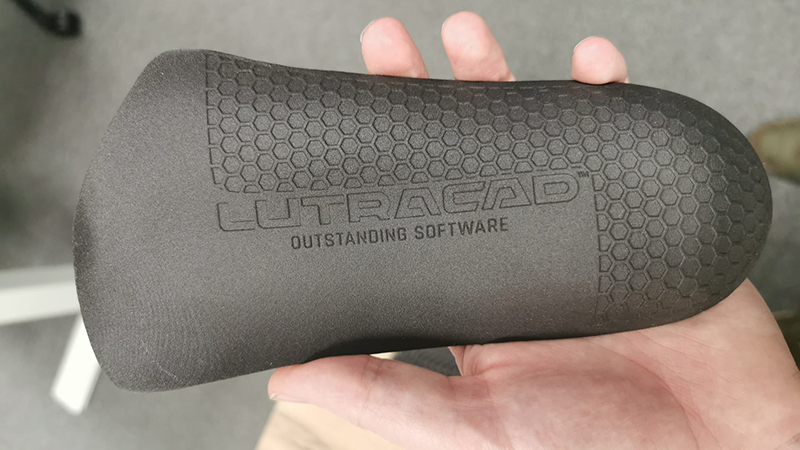 SLS Printed insole
SLS Printed insole
What sets SLS apart is its use of powders, which can come from diverse materials such as plastics, metals, and ceramics, instead of the typical filaments or resins used in many 3D printers. This powder-based approach brings with it an advantage in design flexibility. The absence of support structures during printing means designers can realize even the most intricate and complex creations without constraints.
Beyond design, the precision of the laser ensures that products are not only detailed but also robust. An added benefit of SLS is its sustainable approach to materials. Unfused powder from the printing process can be collected and repurposed for future prints, showcasing SLS's commitment to reducing waste.
In a nutshell, SLS combines the artistry of design with the precision of technology, sculpting masterpieces from simple powder.
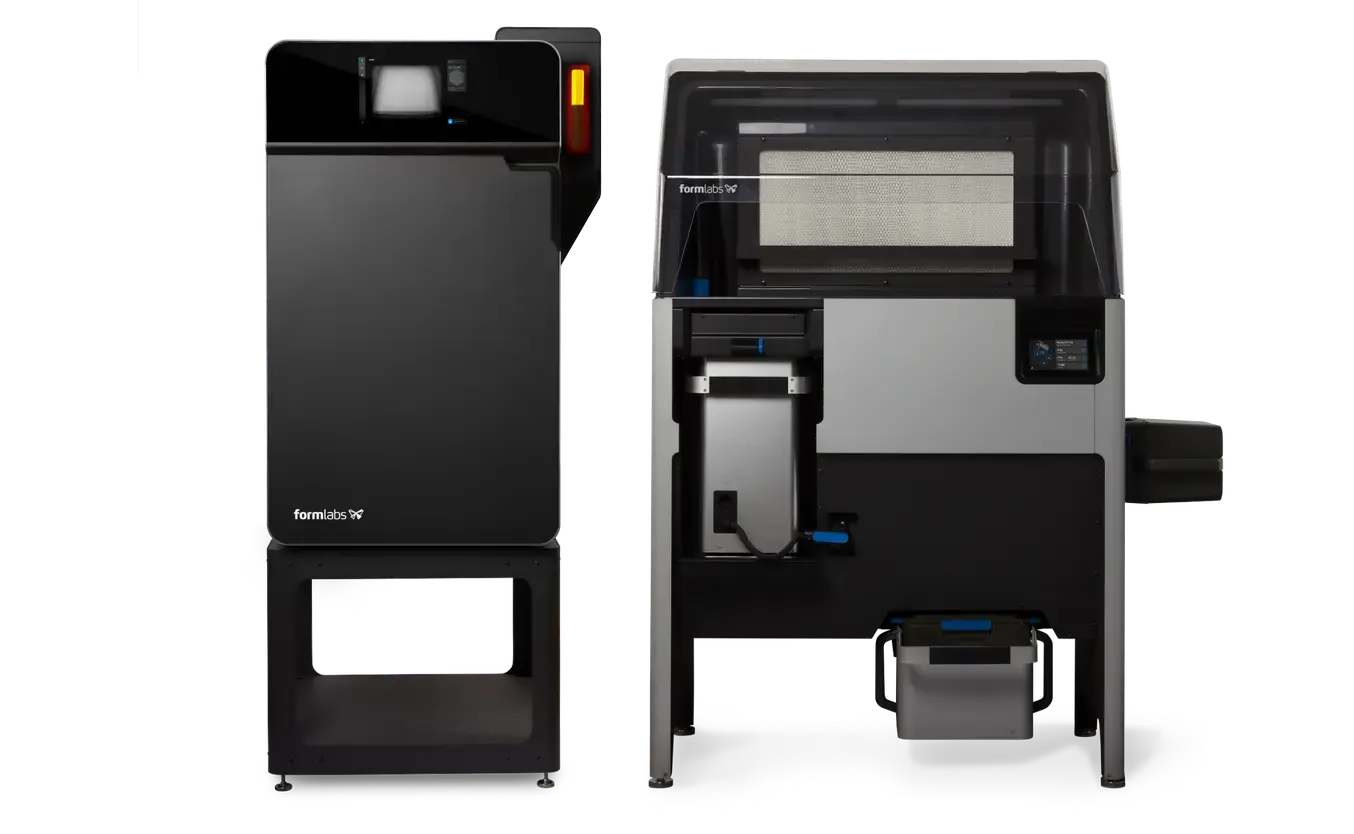 Formlabs Fuse 1+ 30W printing solution. Visit the Fuse 1+ 30W website
Formlabs Fuse 1+ 30W printing solution. Visit the Fuse 1+ 30W website
For our specific test, we employed the Fuse 1+ 30W, a machine that encapsulates Formlabs' dedication to innovation and efficiency. When comparing the Fuse 1+ 30W to larger, more expensive alternatives, several clear advantages arise:
- Accessibility: It significantly lowers the barrier to entry, making advanced SLS printing accessible to even small to medium-sized labs.
- Scalability: As production demands increase, the Fuse 1+ 30W ensures cost-effective scaling, ensuring a return on investment.
- Distributed Production: The machine promotes a strategy of spreading production across multiple printers, reducing potential risks and ensuring consistent output.
Material: Nylon 11 Powder
Nylon 11 Powder is not only excellent for making parts that are both tough and flexible, but it's also good for the environment. Unlike Nylon 12, which is made from petroleum, Nylon 11 comes from natural sources. This eco-friendly aspect of Nylon 11 doesn't sacrifice its quality or performance, making it perfect for functional prototypes and small batch production.
- Adaptive Comfort: The flexibility of Nylon 11 adapts to the foot's contours, offering personalized comfort with every step.
- Durability Guaranteed: Built for resilience, insoles made from Nylon 11 resist wear and tear, ensuring longevity.
- Thin Design, Maximum Support: Nylon 11's capability to print thin yet strong parts translates to insoles that offer support without adding bulk.
- All-Day Wear: Its high-impact resistance ensures the insole maintains its shape and support even after prolonged usage.
- Safe for Skin Contact: Ideal for applications like orthotics and prosthetics, ensuring comfort and safety in direct skin contact.
Choose Nylon 11 Powder when you need top performance and reliable results.
Nylon 11 Powder material properties:
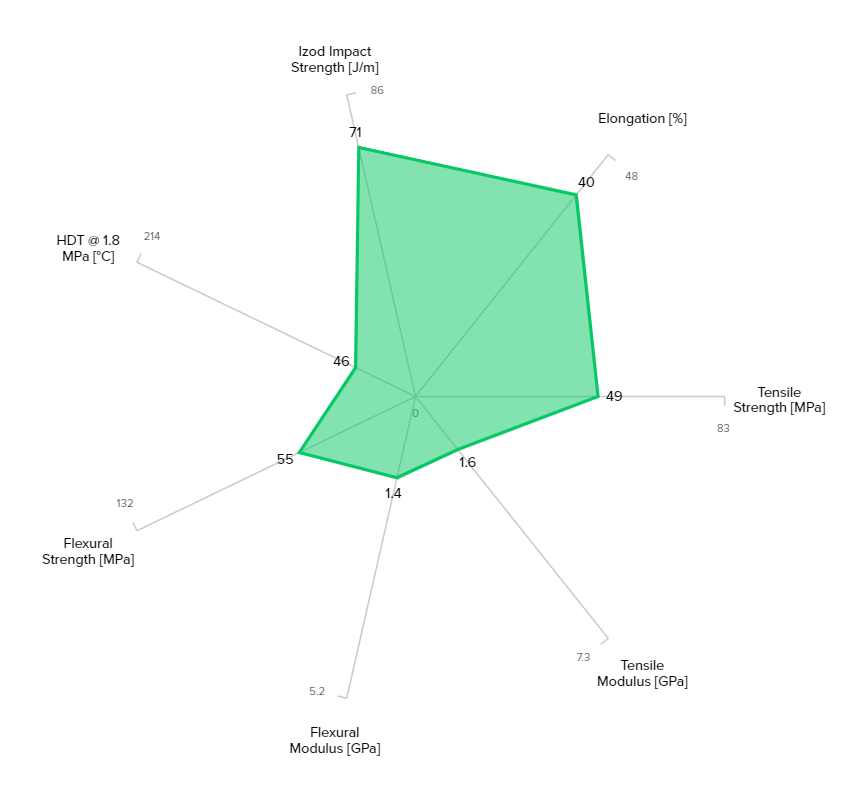 Nylon 11 Powder Material Properties provided by Formlabs
Nylon 11 Powder Material Properties provided by Formlabs
Insole shells design software
Creating the perfect insole using SLS technology demands software as advanced as the hardware. LutraCAD steps into this space, offering specialized software tailored for insole design, seamlessly integrating with PreForm for SLS printing.
LutraCAD: A Comprehensive Solution
LutraCAD isn't just another software; it's a dedicated platform built to produce any kind of insole irrespective of the production technique. As an open system, it welcomes users to integrate their own scanners, milling machines, and 3D printers of any type. When targeting SLS printing, the software provides flexibility, like adding a hole pattern and strengthening certain areas. Automating the entire workflow, LutraCAD collaborates with partners to ensuring an efficient, consistent, and top-tier production process.
Crafting Your Insoles
From start to finish, LutraCAD simplifies the insole design journey. Beginning with importing the foot scan, to making design tweaks, selecting material properties, and finally exporting the file for SLS printing, LutraCAD's intuitive interface makes each step straightforward. Its comprehensive feature set ensures each insole offers an impeccable fit and tailored support.
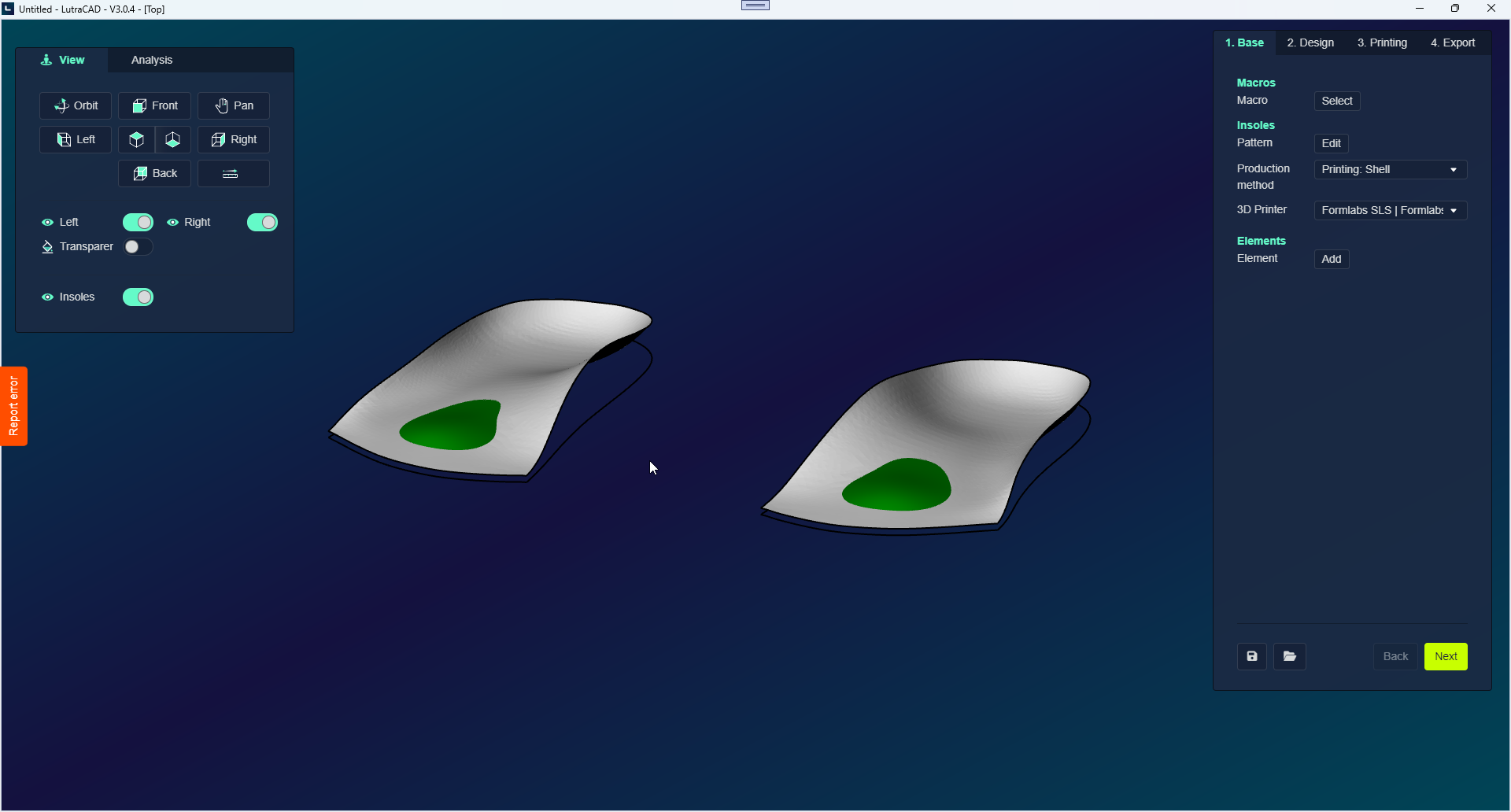 Shell printing workflow with LutraCAD
Shell printing workflow with LutraCAD
Seamless Integration with PreForm
LutraCAD's standout feature is its direct integration with PreForm for those equipped with in-house SLS printing capabilities. Once your insole design is finalized in LutraCAD, a few clicks allow you to directly export your design files into PreForm, streamlining the transition from design to print preparation.
For those looking to outsource, LutraCAD ensures your designs are meticulously prepared and optimized, making it straightforward to hand over to your chosen service bureau for SLS production.
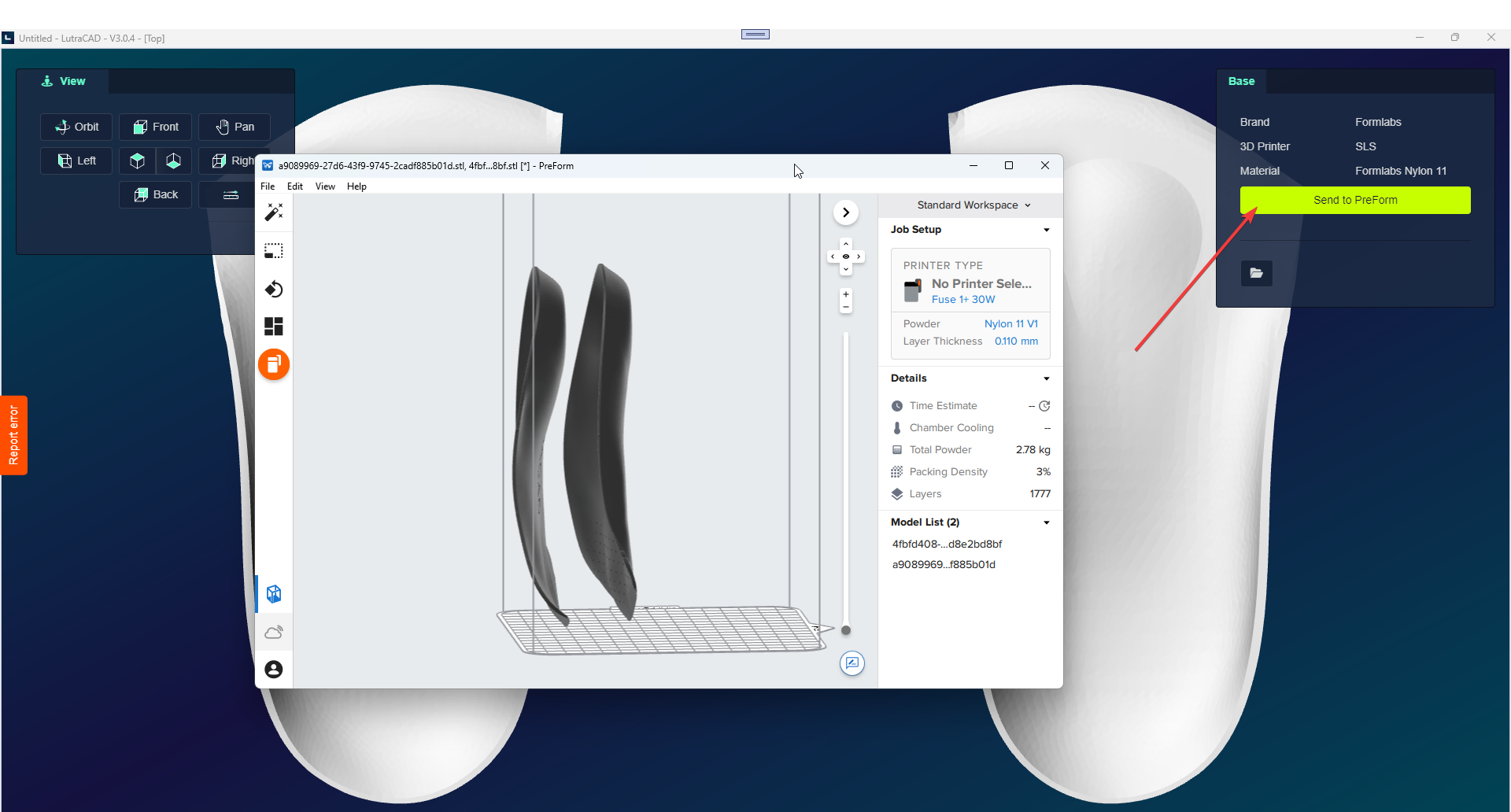 LutraCAD PreForm integration
LutraCAD PreForm integration
The Nesting Phenomenon
Nesting, in the world of 3D printing, is akin to a
The advantages of adept nesting are manifold:
- Optimal Print Orientation: Beyond just fitting parts together, nesting defines the best orientation for each item. This pivotal choice dictates aspects like strength, surface finish, and the success rate of the print. With the right orientation, the risk of print failures diminishes considerably.
- Conservation of Resources: Nesting done right translates to saved material. By placing parts in an optimal layout, material wastage is minimized, leading to cost savings and a reduced environmental footprint.
- Time Efficiency: A well-nested print job can considerably cut down on print times. By producing more parts in a single session, production timelines shrink.
- Versatility in Production: Nesting offers the flexibility of printing varied parts in one go. This is invaluable for items like insoles, where each piece might cater to unique specifications or sizes.
- Uniform Quality: Advanced nesting tools, such as Formlabs PreForm, Materialise Magics, and Autodesk Netfabb, ensure consistent quality across the board. These software solutions take the guesswork out of nesting, guaranteeing each part, irrespective of its position or orientation, adheres to quality standards.
For industries like insole production, where customization meets mass production, the role of nesting is paramount. Efficient nesting, backed by robust software tools, ensures each product strikes the right balance between bespoke design and top-tier quality.
The Cost of Quality: In-house SLS Printing
When considering in-house SLS printing for insoles, understanding the costs involved is crucial. Here's a breakdown based on our tests:
| Factor | Value |
|---|---|
| Pairs of Insoles | 19 |
| Pack Density | 22% |
| Powder Amount | 38g |
| Material Cost | 9.24 USD |
| Hardware Cost | 3.90 USD |
| Total Cost per pair | 13.14 USD |
Note: Labor costs not included.
With a 95% print success rate and a mere 2 minutes required for post-processing each part, in-house SLS printing emerges as both an efficient and cost-effective solution. This method ensures that each insole is crafted to perfection, balancing quality and cost for the best results.
Conclusion
The transformative potential of SLS printing in the realm of insole manufacturing is undeniable. With its unique ability to produce high-quality, customized products efficiently, it offers an edge that traditional methods simply cannot match. Utilizing software solutions like LutraCAD, which seamlessly integrates with tools like PreForm, designers and manufacturers can optimize their designs, ensuring each insole meets individualized specifications. The emphasis on nesting further maximizes efficiency, allowing for multiple pairs to be produced in a single print run. As for the costs, in-house SLS printing, backed by the right tools and processes, presents a cost-effective solution that doesn't compromise on quality. In a world where customization meets mass production, SLS printing stands poised to redefine the future of insole manufacturing.
Curious about SLS printing? Request a free sample part or an online demonstration to see the technology in action.







